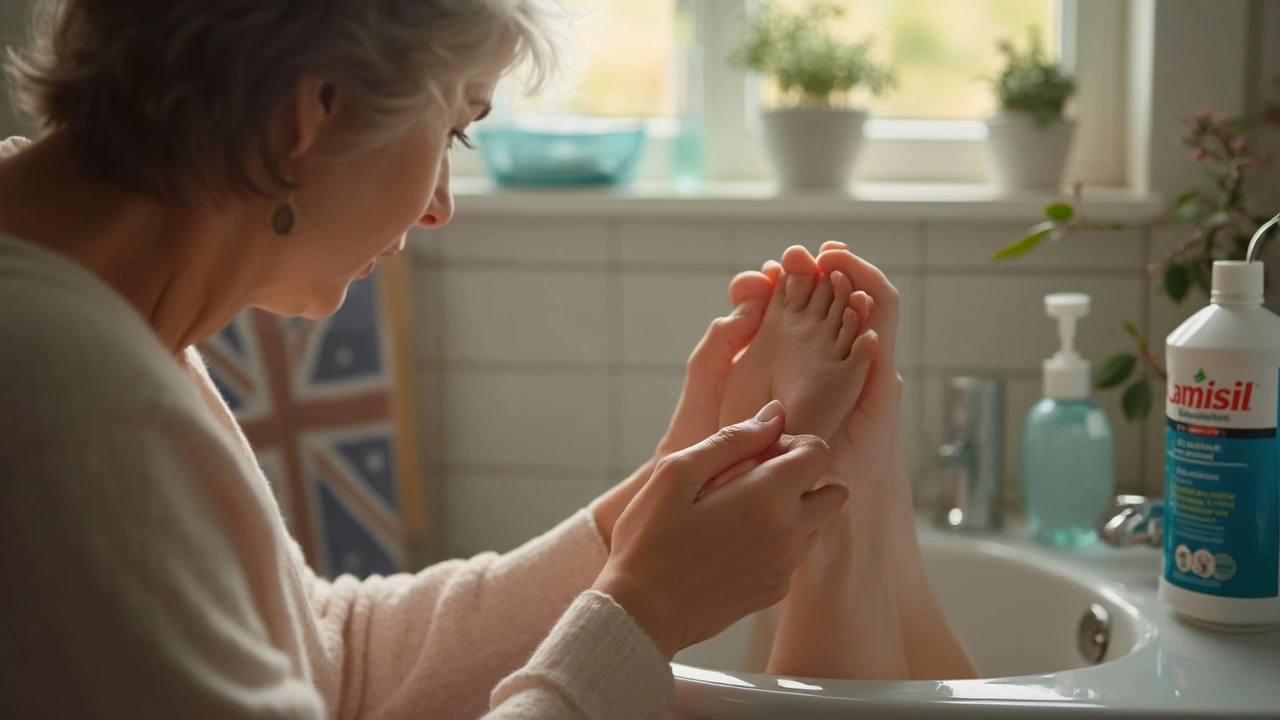Lamisil (terbinafine): June 2025 archive and practical antifungal advice
Seeing a stubborn nail or skin fungus? This month we focused on Lamisil—what it does, how to use it, and how to avoid repeat infections. If you want clear, practical steps, start here.
Lamisil is the brand name for terbinafine. It kills fungi by blocking an enzyme they need to survive, which makes it effective against toenail fungus and athlete's foot. You can get it as a cream, spray, or pill; the form you choose depends on how deep the infection is.
How to use Lamisil correctly
For athlete's foot or ringworm, topical Lamisil cream usually works. Clean and dry the affected area, apply a thin layer once or twice daily, and keep using it for the full recommended period, usually two to four weeks. Stopping early risks the infection returning.
For stubborn toenail infections, oral terbinafine often works better because it reaches the nail root. Typical courses last six weeks for fingernails and twelve weeks for toenails. Your doctor should check liver function before and during treatment if you take oral terbinafine, especially if you have liver disease or take other medications.
Side effects, warnings, and who should be careful
Topical side effects are usually mild: redness, stinging, or itch. Oral terbinafine can cause nausea, taste changes, and rarely liver problems. If you notice jaundice, severe stomach pain, or dark urine, stop the drug and get medical help right away. Tell your doctor about other medicines you take to avoid dangerous interactions.
If you are pregnant or breastfeeding, avoid oral terbinafine unless a doctor says it’s necessary. Children can use topical treatments but check doses first. Elderly patients often tolerate topical forms better; oral therapy needs monitoring.
Practical tips to avoid recurrence: keep feet dry, change socks daily, rotate shoes to let them air out, and use antifungal powder in shoes. Trim and file nails regularly and disinfect clippers after each use. If one family member has a fungal infection, wash bedding and towels and avoid sharing footwear.
How long until you see improvement? With topical creams you may feel relief in days, but full healing can take weeks. Nail infections often need months of treatment before the nail looks normal. Patience matters—keep the routine and follow your provider’s instructions.
If over-the-counter options fail after a reasonable trial, or if the infection spreads or hurts, see a healthcare pro. They can prescribe oral terbinafine or other options and run tests if needed. Quick action and the right treatment cut down recovery time and the chance the infection comes back.
Want to know which form to pick? If infection is only skin and small, try topical for four weeks; if nail or long-standing, discuss oral therapy with your doctor. Also, ask about drug interactions and baseline blood tests. Store creams at room temperature, finish the full course, and check back with your provider if symptoms linger beyond the expected timeframe. Keep shoes clean and consider antifungal sprays for socks and insoles.

Lamisil: Your Guide to Treating Fungal Infections Effectively
Ever wonder how to deal with those stubborn fungal infections lurking around your toes or fingernails? This article breaks down everything you need to know about Lamisil, from how it works to tips for using it right. We’ll cover who should use it, what side effects to watch out for, and why it’s one of the most trusted antifungal medications on the market. Get the inside scoop on avoiding recurring infections, see real-world tips, and learn if Lamisil is a fit for your specific situation. All you need to make informed choices—explained in simple, practical terms.
Read More